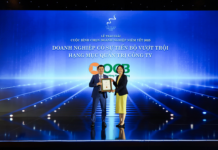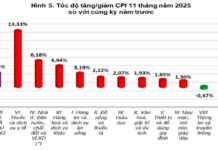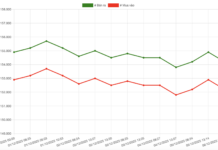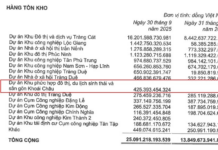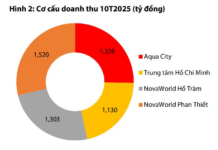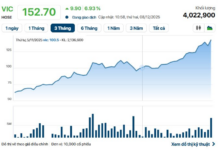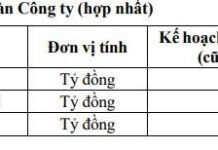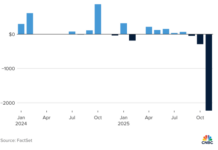
Illustration
Preliminary statistics from the General Department of Vietnam Customs indicate that cotton imports to Vietnam in June reached 87,474 tons, valued at over $179 million. This represents a 42.4% decrease in volume and a 42% decrease in value compared to the previous month. In the first six months of the year, Vietnam imported over 748,000 tons of cotton, equivalent to nearly $1.5 billion, reflecting an 18.8% increase in volume and a 6.5% increase in value compared to the same period in 2023.
The top three cotton suppliers to Vietnam are also the world’s top three producers, and they have been aggressively supplying this precious commodity to the country. Specifically, Brazil is the largest supplier, providing over 253,000 tons of cotton worth more than $520 million. This represents a significant increase of 168% in volume and 124% in value compared to the previous year.
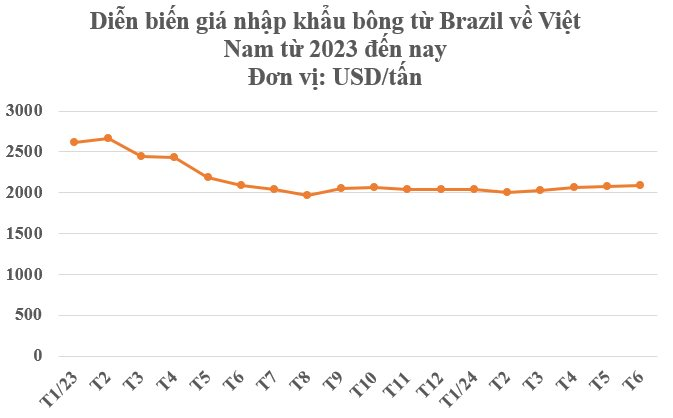
Brazil: Largest Cotton Supplier to Vietnam
Notably, prices have decreased significantly compared to the previous year, reaching $2,050 per ton, the lowest among the main suppliers to Vietnam.
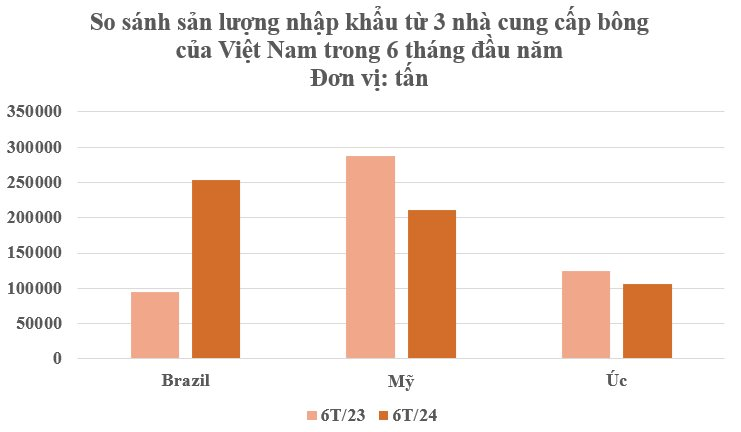
USA: Second-Largest Cotton Supplier
The United States is the second-largest supplier, providing over 210,000 tons valued at more than $445 million. However, this reflects a 26% decrease in volume and a 30% decrease in value compared to the previous year. Similar to Brazil, the US has also experienced a 5% decrease in prices, with cotton now priced at $2,116 per ton.
Australia is the third-largest cotton supplier to Vietnam, providing over 106,000 tons valued at more than $224 million. This represents a 14% decrease in volume and a 24% decrease in value compared to the previous period. Following the trend of the above two markets, prices have decreased by 11% compared to the same period, now standing at $2,099 per ton.
Cotton is a crucial input for Vietnam’s fiber and textile industry. Vietnam is the third-largest cotton importer in the world, with an annual consumption of 1.5 million tons.
According to statistics, the United States and Brazil are the two largest cotton exporters globally, accounting for more than half of the total global supply. For the 2023-2024 crop year, the US is expected to export 12.5 million bales (one bale of cotton is approximately 226.8 kg). However, this estimate may be further reduced due to the impact of drought in Texas. Meanwhile, Brazil is projected to export around 11.25 million bales during this crop year.
According to Mr. Gustavo Vigano, Vice President of the Association, Brazil could overtake the US if the US continues to experience declines in harvest yields and fiber quality. In that case, Brazil would become the world’s largest cotton exporter for the 2023-2024 crop year.
The Vietnam Cotton and Fiber Association has stated that the global cotton industry is witnessing a significant decline in both production and consumption. The latest report from the US Department of Agriculture (USDA) reveals a substantial decrease in the forecast for global cotton production for the 2023-2024 crop year, reflecting a reduction of 4.2 million bales compared to the previous crop year.
The production decreases in regions such as West Africa, the US, Greece, Mexico, and India have overshadowed the increase in production in Brazil.
The average global cotton fiber price in 2023 is estimated at 68.6 cents/lb, a 9% decrease compared to the previous year. This marks the third consecutive year of decline since 2021. The primary reason for this decrease is the falling global cotton consumption. In addition to demand factors, cotton fiber prices are also influenced by the prices of substitute materials such as polyester and viscose, as well as the trade policies of various countries.






